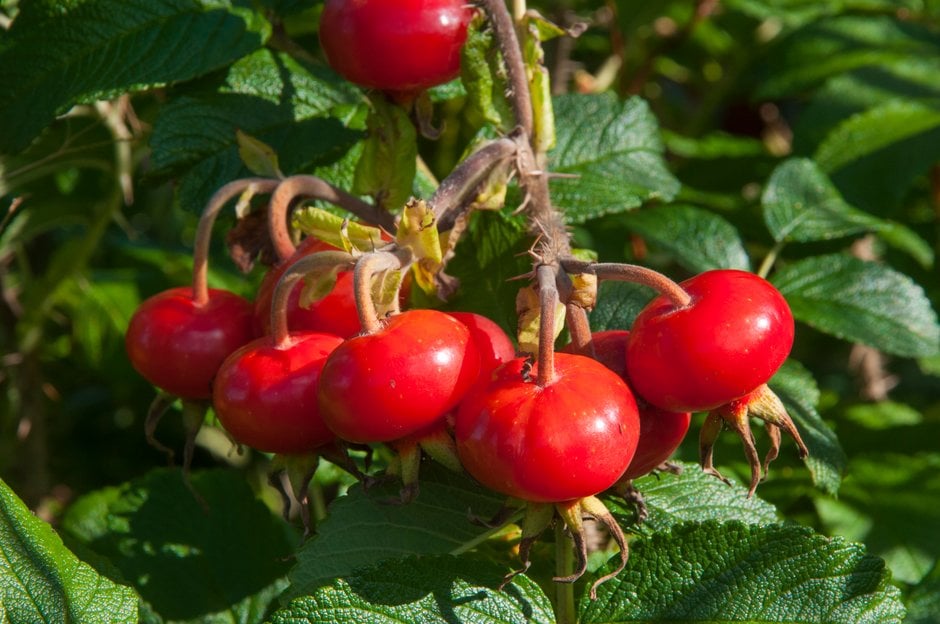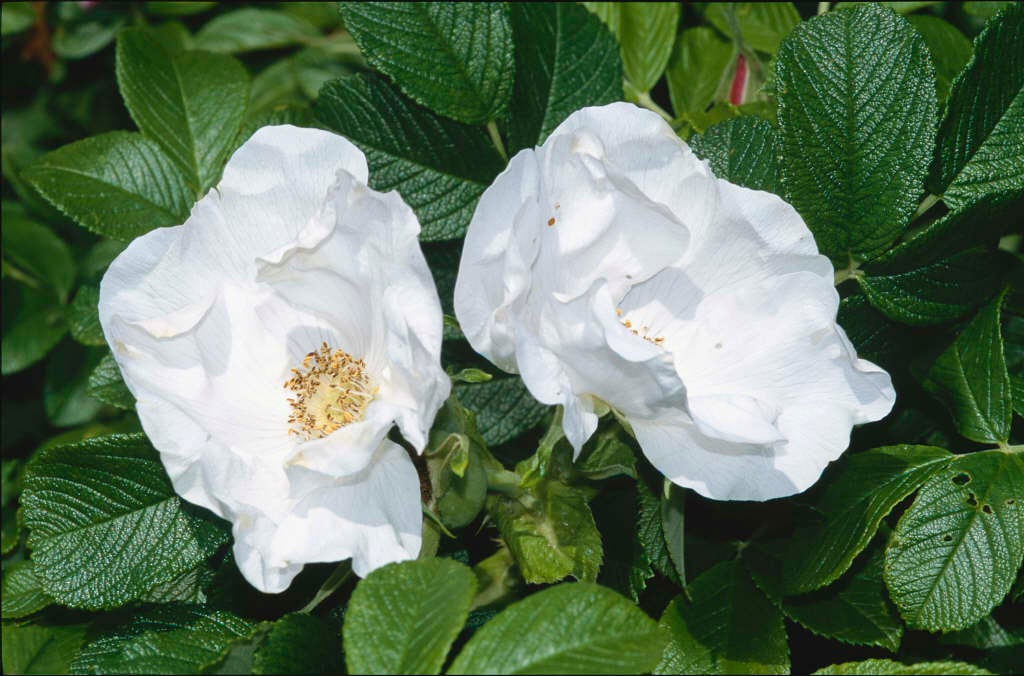Rosa rugosa 'Alba' (Ru)
white Japanese rose
Very vigorous rose about 1.5m tall, with prickly stems and plentiful glossy, wrinkled, bright green foliage turning yellow in autumn. Fragrant, pure white, single flowers 9cm wide open from blush pink buds, in summer and autumn, followed by large scarlet hips
Size
Ultimate height
1–1.5 metresTime to ultimate height
2–5 yearsUltimate spread
1–1.5 metresGrowing conditions
Moisture
Moist but well–drained, Well–drainedpH
Acid, Alkaline, NeutralColour & scent
| Stem | Flower | Foliage | Fruit | |
| Spring | Green | |||
|---|---|---|---|---|
| Summer | White | Green | Red | |
| Autumn | White | Yellow | Red | |
| Winter |
Position
- Full sun
- Partial shade
Aspect
South–facing or North–facing or East–facing or West–facing
Exposure
Exposed or Sheltered Hardiness
H7Botanical details
- Family
- Rosaceae
- Native to GB / Ireland
- No
- Foliage
- Deciduous
- Habit
- Bushy
- Potentially harmful
- Fruit are ornamental - not to be eaten. Wear gloves and other protective equipment when handling. Pets: Fruit are ornamental - not to be eaten - see the HTA guide to potentially harmful plants for further information and useful contact numbers
- Genus
Rosa can be deciduous or semi-evergreen shrubs or scrambling climbers, with usually thorny stems bearing compound pinnate leaves and solitary or clustered flowers. Flowers may be followed by showy red or purple fruits in some varieties.
- Name status
Accepted
- Horticultural Group
- Rugosa roses are upright shrubs with very prickly stems bearing handsome, glossy, wrinkled foliage and fragrant, single or semi-double flowers in summer and autumn, often followed by large, tomato-like red hips
How to grow
Cultivation
This plant is listed on Schedule 9 of the UK Wildlife & Countryside Act as an invasive non-native species. Although not banned from sale, it is an offence to plant or cause these to grow in the wild IN ENGLAND AND WALES. Gardeners possessing them should undertake measures to control them. See RHS advice on invasive non-native species for further information Grow in fertile, humus-rich, moist but well-drained soil in full sun or part shade. Good for hedging and wildlife gardens. Mulch with well-rotted organic matter in late winter or early spring, and for best flowering apply a general rose or shrub fertiliser in early spring and again in early summer. See rose cultivation
Propagation
Please see cultivation notes
Suggested planting locations and garden types
Pests
May be susceptible to aphids, rose leafhopper, glasshouse red spider mite, scale insects, caterpillars, large rose sawfly and rose leaf-rolling sawfly. Deer and rabbits can cause damage
Diseases
May be susceptible to rose black spot, rose rust, replant disease, rose dieback, and rose powdery mildew and sometimes honey fungus. May also be susceptible to disorders rose blindness and flower balling
Love gardening
Sign up to receive regular gardening tips, inspiration, offers and more
View our Privacy Policy
Get involved
The Royal Horticultural Society is the UK’s leading gardening charity. We aim to enrich everyone’s life through plants, and make the UK a greener and more beautiful place.

